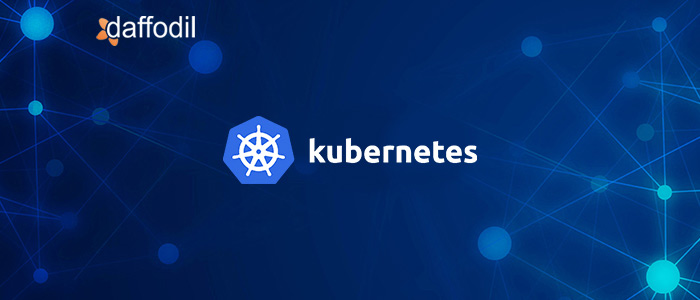
Software developers are always on the lookout for reliable open-source infrastructure alternatives for developing and deploying applications. That is where Kubernetes, a cloud-native cluster management software solution, comes in. It provides comprehensive solutions for automated app deployment and interoperability among microservices.
Most app developers and DevOps operators rave about the ability of Kubernetes to optimize your microservices architecture. It helps orchestrate your application by packaging it into containers for seamless deployment later on.
In this article, we explore how an organization can plan out its roadmap for migrating its application development processes to Kubernetes. We will follow that with the various benefits that this platform has to offer software businesses. But first, let us define Kubernetes in simple terms.
What is Kubernetes?
Kubernetes is essentially a cloud-native platform for systematically arranging applications or microservices to automate a desired process. This arrangement is referred to as orchestration and involves the creation, monitoring, and deployment of resources for application development. As per the Cloud Native Computing Foundation (CNCF), several organizations today are making the shift to Kubernetes as you can see in the pie chart below:
.jpg?width=1200&name=image%20(1).jpg)
This platform or system is one of the most promising cluster management software solutions that is gaining popularity at a blinding pace. It enables seamless automated app deployment, efficient operability and scalability. Your applications can be containerized which greatly increases cloud-hosted infrastructure utilization. Multiple app-driven processes can share computational resources dynamically because of this.
How An Organization Can Plan The Migration To Kubernetes?
Kubernetes was created as an extremely flexible and easily configurable platform but leveraging its full potential involves a series of steps. Through team skill-building and training as well as proper blueprinting of a migration plan you can implement container orchestration successfully and reap its benefits.
The roadmap that an organization must keep to so that it can successfully migrate to Kubernetes consists of the following steps:
1)Strategy Definition
The first step to decide how much of a right fit Kubernetes is for your organization is to define goals for its implementation. You must strategize around how it will change and evolve over the next decade of migrating to this new cluster management solution. This strategy should ideally be as progressive and flexible as possible.
Once the high-level strategy is finalized you can begin refining the exact organizational goals of this migration. The size of your application or microservice clusters must be decided and the needs of each team migrating to this system must be well defined. While delivering baseline functionality for your application you should be able to stick to industry standards and have all the control that you can over the implementation.
2)Compartmentalizing Application Development
Each team involved in the development of the application must pull together information about which services combine to create the application. This will help them compartmentalize the application to decide which components need to be migrated to the orchestration layer.
The network interactions involved between the different interfaces of the application must also be examined in addition to the services. Assigning files within the filesystem to contain data about configuration and deciding which ones will have static and dynamic data is another important step.
3)Containerizing Services
Using image repositories to containerize all services and processes requires a team with high-touch expertise. These container images may contain binary data related to a variety of development languages and interfaces depending on the type of application deployed.
Following deployment to an appropriate environment, the content, format, and context of your image repositories should be decided. Depending on the application's requirements, some degree of customizations can also be accommodated into the containers. You can then decide whether to refactor your existing legacy application or run the application inside of the container.
4)High-Level Technical Considerations
Some high-level technical considerations regarding the development environment include the
- storage,
- controllers,
- configurations and,
- network policies
It is important to first decide whether there is a need for cloud-native storage solutions or persistent storage volumes. The team must understand how your controllers will manage your smallest deployable units, known as pods.
Configurations are stored in API objects known as configmaps which are pushed to your Kubernetes cluster. Application-centric network policies allow pods to be isolated or non-isolated to control traffic flow.
Benefits Of Migrating To Kubernetes
The cluster management solution that Kubernetes brings to any organization helps with smooth automated app deployment, operability, and scalability. As the efficiency of container-based applications increases with automated deployment and management, so does the efficiency of the entire organization. The advantages of migrating to Kubernetes come down to the following:
Cost Flexibility
Kubernetes offers immense room for customizable cost-efficiency from its implementation across a company's IT operations. By examining your pod usage and application performance over time you can find places where you can save expenditure. You can carefully set resource requests and limits on resource usage for reducing overall costs while ensuring optimal performance and negligible wastage.
Operational Uniformity
An application development environment migrated to Kubernetes helps maintain consistency across all aspects of development. From software development, DevOps, quality analysis, sysadmins, and others the Kubernetes platform provides a holistic environment. The integrity of the entire software development life cycle is preserved irrespective of whatever changes are rendered in the Kubernetes clusters.
Portability
Be it application clusters that run on bare metal machines or Virtual Machines (VM), Kubernetes can be leveraged on both on-premise and cloud-based environments. The applications are completely containerized, which means that they can be orchestrated across infrastructures. Additionally, containerized applications also provide platform-agnosticity, as Kubernetes provides support for most of the programming languages prevalent today.
Scalability
Containerized applications built within the Kubernetes framework are always set up and ready for planned scaling activity. The Kubernetes platform provides plenty of tools for dealing with app-related workloads. Be it corporate data centers, private or public clouds the workloads can be smoothly reallocated without facing any performance issues or downtime. This is achieved thanks to the limitless elasticity and automation of process clusters provided by Kubernetes.
Security And Authentication
Role-based access control lets teams control who can access the Kubernetes API and other permissions. Application orchestration is a process that occurs securely by letting you initialize pods with artifacts like keys, passwords, tokens, etc. Also, in a private cluster, the API server endpoint has a private IP address that keeps the master masked or hidden from the public internet.
ALSO READ: What is Infrastructure Automation in DevOps?
Ensure Better Application Deployment With Kubernetes
Application deployment with Kubernetes presents plenty of benefits for your organization ranging from ease of management to boundless scalability. It can seamlessly be integrated with existing infrastructure through sufficient training and knowledge transfer for your organization's software development teams.
Here at Daffodil, we can provide reliable DevOps Services that ensure judicious resource utilization and maintain integrity across your software development life cycle. Book a free consultation to begin a journey towards efficiency and superior results.



